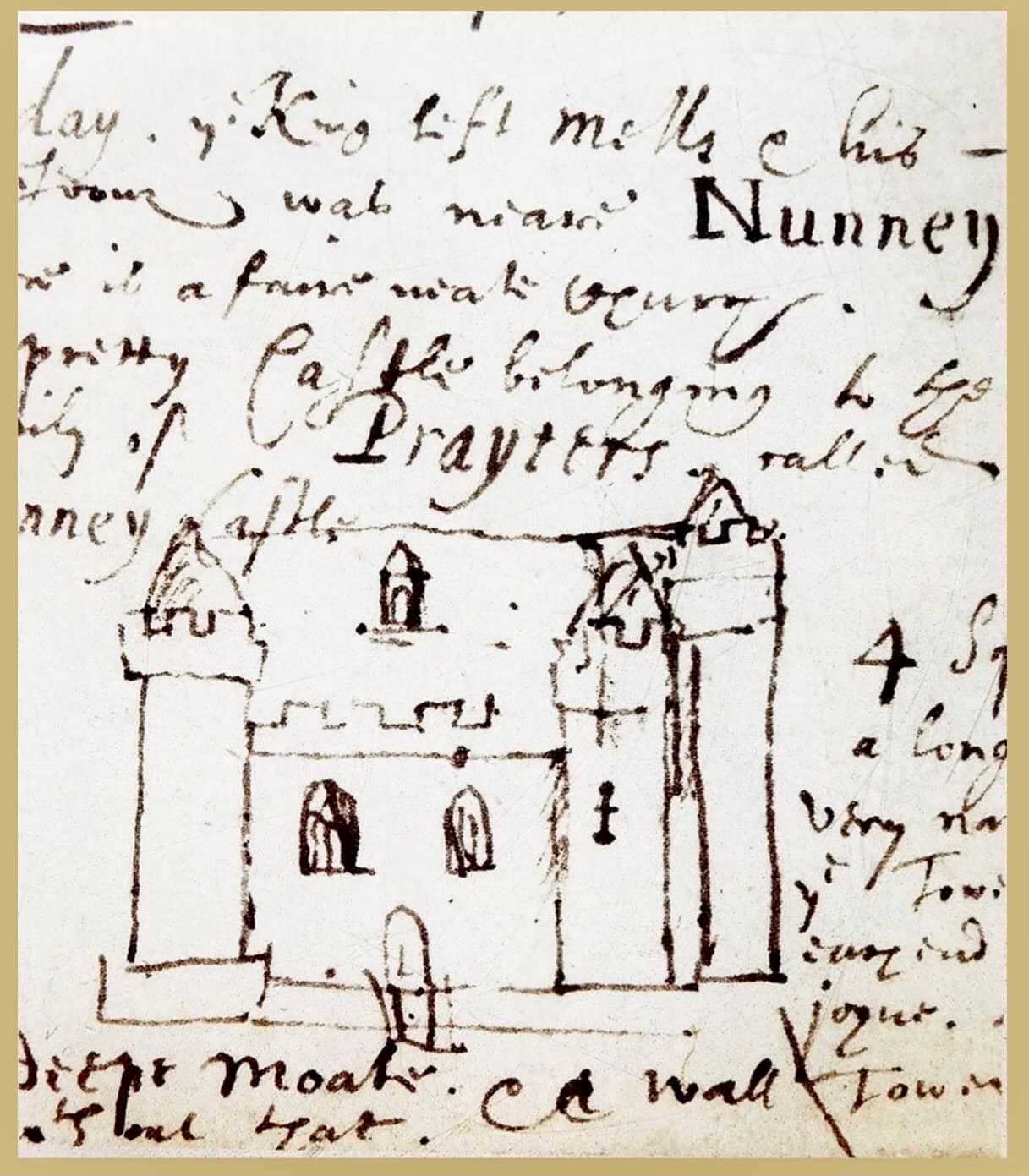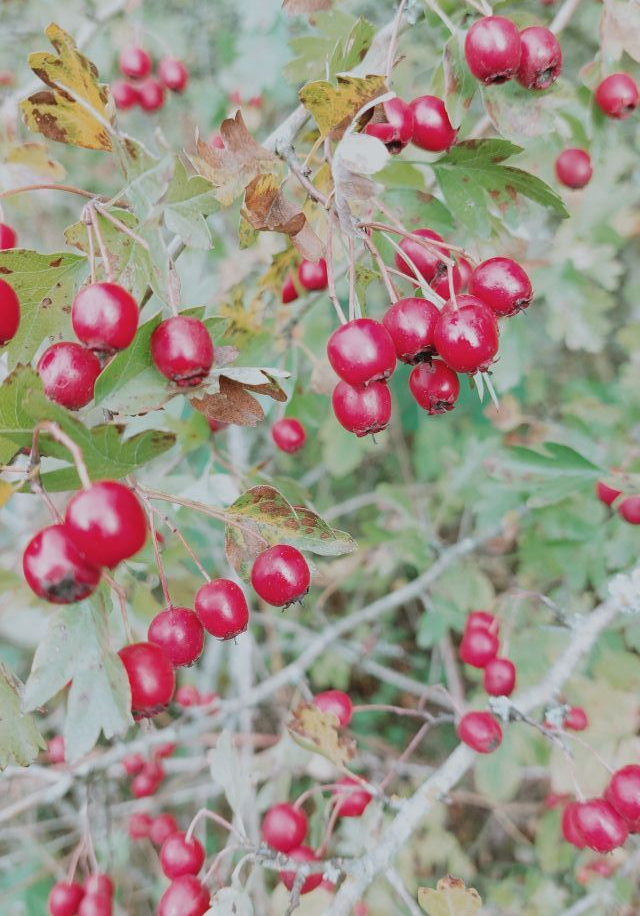Nunney Castle - Nunney - Somerset
Nunney Castle- Nunney
History-
Nunney Castle was constructed in the fourteenth century by John de la Mare, a soldier who had served in France during the Hundred Years War.
Its design was influenced by continental architecture.
The castle was held by Royalist forces during the Civil War but was besieged by a Parliamentary army under Sir Thomas Fairfax and bombarded into submission.
John de la Mare, was an experienced soldier who is believed to have fought in France during the early years of the Hundred Years War and had made his fortune from ransom money.
He subsequently held numerous important appointments including Constable of Old Sarum Castle and Sheriff of Somerset.
He was knighted in 1373 and, to mark his new found status, he sought permission to build an elaborate residence.
On 28 November 1373, John was duly granted a "licence...to crenellate his dwelling-place at Nonny".
Nunney Castle was clearly intended as a statement of power and status rather than as an effective fortification due to its placement near a valley bottom, overlooked by nearby higher ground.
The design was heavily influenced by John's experiences on the continent as it reflected contemporary French architecture (although this should not be over-stated as similar English examples also survive at Dudley, Haughton, Langley and Stafford).
It was constructed from oolite ashlar and was a four storey quadrangular castle with round towers, topped with conical roofs, on each corner.
The ground floor was occupied by a kitchen and storerooms whilst the first floor was servants' accommodation, the second floor was dominated by the Great Hall and the level above served as high status accommodation.
At parapet level projecting corbels provided support for a wooden platform that surrounded the top of the structure.
The tower was in immediate proximity to the Nunney Brook, which provided a source of fresh water and also filled the moat that surrounded the structure.
Beyond, a large courtyard would have contained stables and other supporting buildings.
The de la Mare family remained owners of Nunney Castle until the early fifteenth century when the last male heir, Elias de la Mare, died during Henry V’s 1415 campaign in France.
It passed through marriage to Sir John Poulet, whose main residence was Basing Castle (now Basing House) in Hampshire.
It remained with the Poulets until 1572 at which point it was sold and eventually came into the hands of the Roman Catholic Prater family.
They made extensive modifications to the tower to bring it into line with the enhanced levels of domestic comfort expected at the time.
In 1642 friction between King and Parliament erupted into Civil War.
The owner of Nunney Castle at this time was Richard Prater who, like his immediate ancestors, was a staunch Roman Catholic.
Accordingly he opposed the Protestant leanings of Parliament and supported the Royalist cause.
Throughout the early years of the war, Royalist dominance in the South West meant Nunney Castle was untouched by the conflict.
However, after the destruction of the King's last major field army at the Battle of Naseby in June 1645, Parliamentary forces started reducing Royalist garrisons.
In Somerset Sherborne was attacked first followed by Castle Cary and Shepton Mallet.
On 6 September 1645 a Parliamentary army under Sir Thomas Fairfax arrived at Nunney.
'Above the walls floated a red standard and in the midst thereof a fair crucifix cross, a Catholic symbol which infuriated the besiegers'
The garrison of 80 men refused to surrender so heavy artillery was brought up from Shepton Mallet.
This was in place by the 8 September 1645 and used to smash a breach in the north wall prompting Colonel Prater to surrender.
He wanted to save his castle from destruction, but he failed and it was dismantled, all its interior was burnt out, gutted and destroyed, left laid in ruins, one can only imagine the treasures which were destroyed in the flames which shot high above the towers that September day.
The damage to Nunney Castle left the structure as little more than a gutted ruin but, after it was returned to the Prater family in the 1660s, it was restored back into a habitable residence.
The burnt out floors were replaced and the north side, which had suffered from the artillery bombardment, was rebuilt.
The castle remained inhabited for much of the eighteenth century but thereafter was abandoned and allowed to drift into ruin.
On Christmas Day 1910 a portion of the wall collapsed and, as the rest of the structure continued to deteriorate, the then owner, Robert Bailey-Neale, handed the castle over to the State.
The Castle grounds were rumoured to have hosted several witch trials, as part of the Somerset Witch Trials.
Headed by Robert Hunt JP a 'zealous' witchhunter in the 1660's, he personally led a hunt for eight years, tracking down ‘a hellish knot of witches’ in Somerset and
presided over the many cases of suspected witchcraft brought forward at the Assizes held in Taunton Castle.
Hauntings -
One story is that of a cloaked woman or grey Lady, who is said to walk beside the moat at dawn and around the castle.
Her history is a little sketchy but it is thought she was accused of witchcraft and put to death outside the castle walls.
People have reported seeing dark figures in the upper levels and felt like they are being watched from above too.
Stone throwing is another common activity here too.
A large black horse and rider is said to trot down the main street and up to the castle entrance, sometimes accompanied by a large black dog.
Some believe this is Richard Prater, who was forced to surrender the castle in the Civil War, see above.
Thoughts -
As it is very close to me, this in one of my special interest projects, so I am collecting and collating any evidence that may have been gathered over the years to look for any consistencies.
I have captured some evp here and friends have experienced a few things as well.
For the stone throwing, there are a lot of birds in and around the castle ruins most of the time, and the wall are always crumbling with fresh pieces coming off regularly, so that could account for the apparent stone throwing.
Although to test the stone throwing activity, a proper controlled experiment of asking out and multiple cameras covering the area would be useful with this alleged phenomenon.
The story of the witch tried and executed at the castle - the only alleged witch linked to Nunney is that of Julian Cox, who maybe lived there at some time, but in her detailed story, see link, she was executed at Taunton in 1663, but she wasn't tried at Nunney.
I have read of Robert Hunt going to Nunney, but will need to look further for more details.
Have you ever had an experience at the castle? or witnessed anything at all?
Photos Credit- P Wallace / Somerset Paranormal
Rare Old Prints - Simon and Nathaniel Buck - Dated 1733
The drawing was done by a Royalist Officer in 1644, he original is in the British Museum - Cliff Dockerell - Somerset History & Mystery
Sources - Paranormal Somerset - Selena Wright
AM Gould - Somerset Author, The Witches of Selwood Forest - Andrew Pickering
Michael McGarvie - Somerset Guardian 1973
Julian Cox Story
#Nunney #nunneycastle #castle #hauntedcastles #hauntedsomerset #ghostsofsomerset #paranormalsomerset #somersetparanormal #castleghosts
















